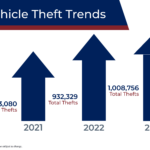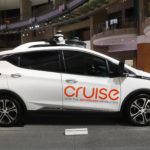The only thing interrupting the creosote and mesquite that make up one of New Mexico’s most remote stretches of desert is a pristine runway where Virgin Galactic plans one day to launch the world’s first commercial space-line.
In the four years since its completion, however, the runway has seen little use. No constant roar of jet engines. No screeches from landing gear. Just promises, year after year, that it would shuttle paying passengers to the edges of Earth.
Virgin Galactic had proclaimed 2015 was finally going to be the year. That was until the company’s rocket-powered spacecraft broke apart over California’s Mojave Desert during a test flight last fall, killing one pilot and igniting speculation about the future of commercial space tourism and Spaceport America.
Virgin Galactic CEO George Whitesides said things are on track now and testing will take off again this year.
“I really think we’re turning the corner,” Whitesides said. “We’ve gone through one of the toughest things a company can go through and we’re still standing, and now we’re really moving forward with pace.”
He said the company and its investors aren’t backing down from the goal of making space accessible.
Virgin Galactic’s manufacturing crew is about two-thirds done with building a new spacecraft, and the operations team is ramping up for a test-flight program that will serve as one of the last major hurdles to getting off the ground.
“Our company has spent a lot of time and money to get to the point where we can carry out successful commercial operations at Spaceport America. We’re still committed,” he said.
Whitesides has always been reluctant to attach a timeline to the milestones the company needs to reach, but he’s certain test flights will resume later this year.
That’s what New Mexico taxpayers want to hear.
They’ve already funneled nearly a quarter of a billion dollars into the world’s first purpose-built spaceport, and state lawmakers are being asked for nearly $2 million more this year to make up for the lost fees stemming from the delay in Virgin Galactic’s commercial flights.
Some lawmakers have called for pulling the plug, adding fuel to criticisms that the project – first initiated by former Gov. Bill Richardson, a Democrat, and British billionaire Richard Branson – is a boondoggle.
Others, including Republican Gov. Susana Martinez’s administration, say the state has a chance to carve out a new niche for economic development and position itself on the front end of space tourism.
New Mexico has struggled to rebound from the recession, creating only 14,000 jobs over the past year while neighboring states have bounced back to 2008 employment levels.
Whitesides visited Spaceport America in December. The runway was quiet, but workers inside the massive, futuristic hangar continued to outfit it for the day Virgin Galactic opens.
“I really think we’re on the edge of something truly incredible, which is enabling people and students to experience space, whether going themselves or sending their experiments,” he said.
Christine Anderson, the head of New Mexico’s Spaceport Authority, pointed to the ill-fated Apollo I launch rehearsal and the 1986 Challenger explosion as examples of space exploration efforts that resulted in tragedy. Still, astronauts and scientists pushed on, and she said those backing Virgin Galactic and Spaceport America are doing the same.
“We have invested $218 million, so there’s absolutely no reason to stop now,” she said.
Virgin Galactic continues to pay its lease, and more money will come from lease and user fees related to the testing scheduled to begin this spring for a reusable rocket being developed by Elon Musk’s SpaceX. But Anderson acknowledged that the spaceport needs to entice more tenants and host other events, including fashion and auto photo shoots, conferences and more rocket launches by companies such as UP Aerospace.
Was this article valuable?
Here are more articles you may enjoy.

 Travelers Survey: Distracted Drivers Making US Roads More Dangerous
Travelers Survey: Distracted Drivers Making US Roads More Dangerous  Tesla Settles Over Fatal Autopilot Crash on Eve of Trial
Tesla Settles Over Fatal Autopilot Crash on Eve of Trial  National Crime Report Shows Vehicle Thefts Surged to More than 1 Million in 2023
National Crime Report Shows Vehicle Thefts Surged to More than 1 Million in 2023  Report: Autonomous Vehicle Jobs to Exceed 110k in U.S.
Report: Autonomous Vehicle Jobs to Exceed 110k in U.S. 